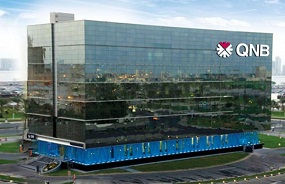
China’s latest stimulus measures seem to have been enough to avoid a hard landing. According to the National Bureau of Statistics (NBS), real GDP growth slowed to 7.3% in Q3 2014, which is broadly in line with QNB projections of 7.5% for 2014 (see our China Economic Insight Report).
The global economy should, therefore, be spared the negative impact of a Chinese hard landing, thanks in part to repeated injections of fiscal and monetary stimulus this year. However, the days of voracious Chinese demand driving up global commodity prices are probably over, a QNB press release said.
In light of slower global and domestic demand, the Chinese authorities have introduced a series of stimulus measures in 2014 to achieve their growth target of 7.5%.
Following the release of Q1 GDP data in April, the government provided tax breaks for small companies, spending on high speed railways and increased financing for social housing.
In April and June, the central bank cut the reserve requirement ratio for rural banks and banks’ lending to the agricultural sector and small- and medium-sized enterprises.
This was followed in September and October by two rounds of liquidity injections in the form of three-month loans to banks amounting to more than USD110bn. Finally, the central bank cut its benchmark lending rates on 14-day repurchase agreements twice over the last 30 days.
These stimulus measures seem to have been sufficient to prevent a sharp drop in growth, but the economy is still slowing at a gradual pace.
Real GDP growth remained well above 7.0% throughout the first nine months of 2014, compared with an average of 7.7% in 2013. It is expected to continue slowing gradually in 2015-16, which may result in a soft landing. However, stimulus measures have been so far insufficient to keep growth above the government’s 7.5% target.
This may be because stimulus measures are being offset by regulatory restrictions on lending in the shadow banking sector and by weak global and domestic demand.
The various stimulus measures have not resulted in higher overall lending to the economy. Total social financing, a broad measure of lending in the official and shadow banking systems, fell 4.6% in the first nine months of 2014, compared with the same period in 2013.
This was mainly due to a series of regulatory measures introduced in the second half of 2013 and early 2014 to restrict lending in the shadow banking sector. Notwithstanding this decline, growth in the traditional banking system (excluding shadow banks) grew by a healthy 15.9% year-on-year in August.
The effectiveness of stimulus measures may be waning as global and domestic demand for Chinese goods is weakening faster than expected. The IMF has just revised downwards its global growth projections for 2014 to 3.3%, from 3.7% previously.
In addition, Chinese retail sales grew at a slower pace of 11.6% in the twelve months to September 2014, compared with an average of 13.2% in 2013. As a result, indebted companies and individuals are unwilling to borrow more, even at lower interest rates, given overall weaker demand.
At the same time, the government is unlikely to engage in a new fiscal stimulus to boost growth. A USD 600 billion stimulus program launched in 2008 resulted in overinvestment and excess capacity in the economy.
This in turn has led to over indebtedness of corporations and individuals and significant excesses in the shadow banking system.
To avoid the mistakes of the past, the government is therefore likely to accept a gradual slowdown in growth in the short term and has indicated that it is unlikely to provide broader stimulus measures.
Over the medium term, the government is counting on structural reforms to boost growth through a shift to a more market-based, consumption-led growth model as opposed to investment-led in the past.
To achieve this goal, the government plans to liberalize interest rates and the financial sector more generally, introduce market based pricing of resources and utilities, allow greater private ownership in state owned enterprises, and ease restrictions on urban migration.
This may over time change the economic model of Chinese growth, where private consumption is the dominant contributor. Given that these reforms will take time to have an impact, we expect growth to continue slowing for some time in China. Current stimulus measures appear to be sufficient to prevent a hard landing.
However, the ramifications of the Chinese slowdown will be felt in the rest of the world. China has been the key driver of global growth since 2009 and its slowdown will be a drag on the global economy.
Weaker demand from China is also likely to be a drag on international commodity prices, including oil prices, for some time to come.
Source : Qatar News Agency












